Mopar Monsters
Almost 50years of development have made the Gen 2 Hemi the most powerful racing engine on the planet.
By Paul Stenquist Photos by Chris Graves
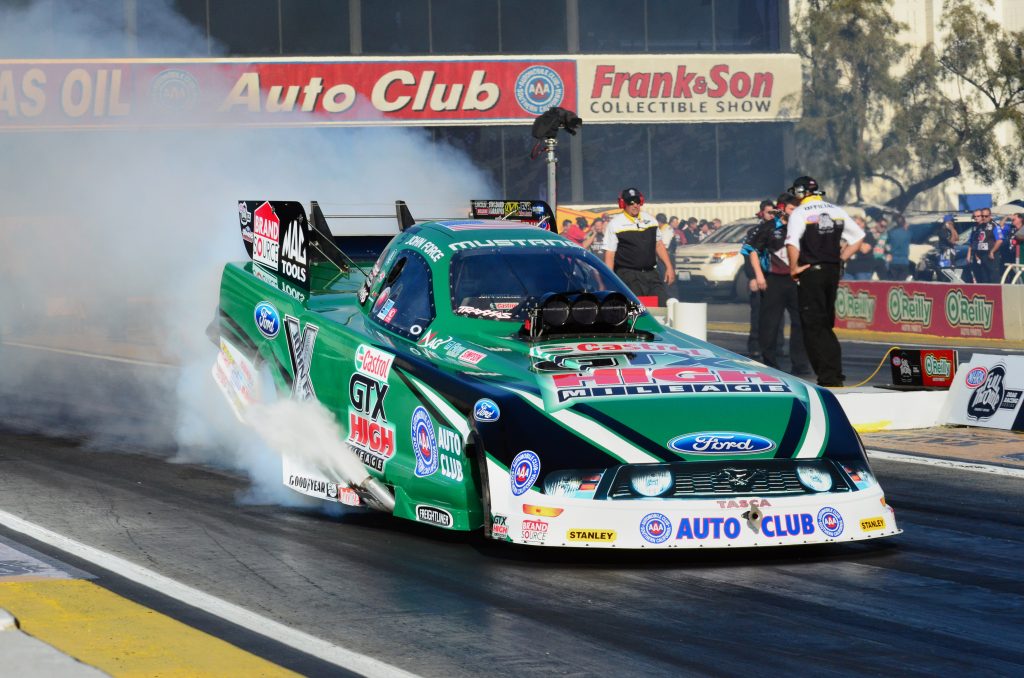
Regardless of what logos the body might wear, today’s 8,000+ horsepower funny car motors are all direct descendants of the Gen II Mopar Hemi.
If you watch NHRA drags on the tube, you’ve heard it. A funny car driver is interviewed at the end of the track. Gasping for breath and sweating profusely, he says, “All that Ford horsepower has this dog hunting real good.” Or, worse yet, “With so much Toyota horsepower on tap, there was no way we were going to lose.”
Well, he may not have lost, but he lied. All of the funny car and top-fuel motors currently in use are direct descendants of the Gen 2 Mopar Hemi. Direct descendants that have been fine-tuned over the years to produce a mind-blowing, ear-splitting, earth-moving 8,000+ horsepower.
What Makes ‘Em Mopars
I’ve been a fan of fuelers for many years. I even beat on a few flops back in the 1970s. But until recently, I hadn’t paid a lot of attention to how the motors had evolved over the decades. I figured today’s fueler engines were a far cry from the near stock Hemis – topped with a blower and fueled with nitro – that took the cars I wrenched to 230 mph way back then.
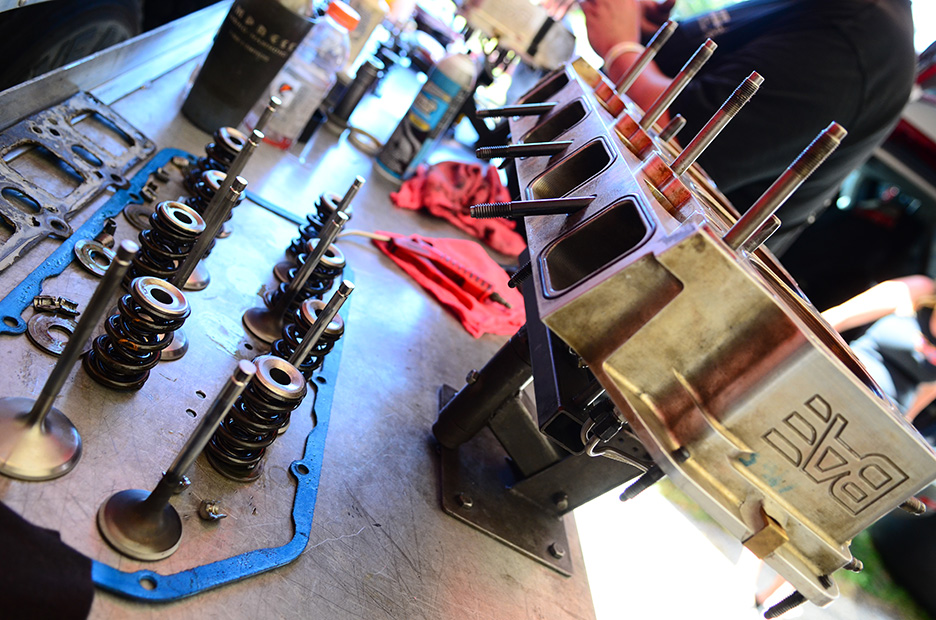
Part of between rounds maintenance is a check of valve seating and valve spring condition.
I got a wakeup call at a Ramchargers reunion last spring. Speaking at the event, Jim Thornton, an original team member and Chrysler engineer, wrapped his speech by reminiscing about how Tom Hoover had been instrumental in the design of the Gen 2 Hemi. “It worked, and it’s still working in fuel funny cars and dragsters,” he said. “If you take a head from back then and lay it on the table and lay a modern fueler head next to it, you’ll say ‘those are about the same.’ Well they are.”
Austin Coil, drag racing’s preeminent funny-car crew chief and the guy who took John Force from outhouse to penthouse, confirmed it. In a conversation about modern fueler engines he said, “Well the heads look about the same as when you were racing. They’re thicker to support the area around the intake seat; the ports and intake valves are bigger. Some guys run 2.45-inch intake valves. Some run exhausts as big as 2 inches, while others run ‘em smaller than stock. There are a lot of versions. But the chambers are Hemispherical, and the valve angles and bolt pattern are identical to those of the 1964 heads. Those dimensions are mandated by NHRA rules.”
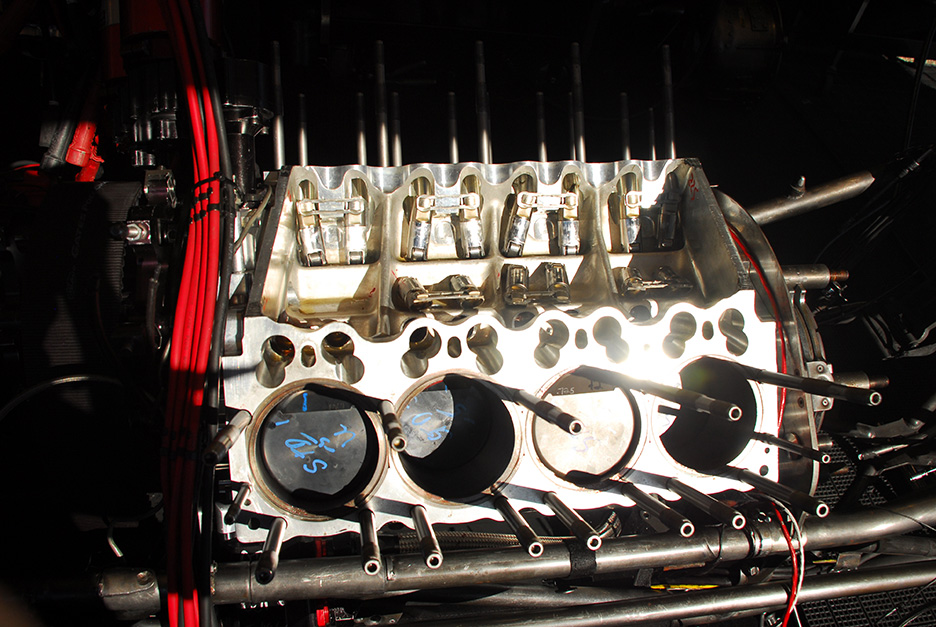
The topside of a funny car short block on the engine stand. The compression height, which is a tuning tool, is indicated on the crown of each piston.
Coil added that the solid aluminum engine blocks that are the foundation of modern fueler engines are also very much like the original Gen 2 Hemi, and that’s not about to change. Again, the general dimensions are determined by the sanctioning body’s rule book.
Yep. We’re talking about an engine design that’s almost half a century old making more than 8,000 horsepower. That number, Coil said, isn’t a guess. It was calculated by aerospace engineer Pat Hale, using tools designed to gauge the performance of jet aircraft.
“There are some unknowns, but Pat took into account the data we had,” Coil said. “Polar moments of inertia, aerodynamics, slippage, and acceleration times along the way. By the numbers, the absolute best run ever might be 8300 or 8400 horsepower.”
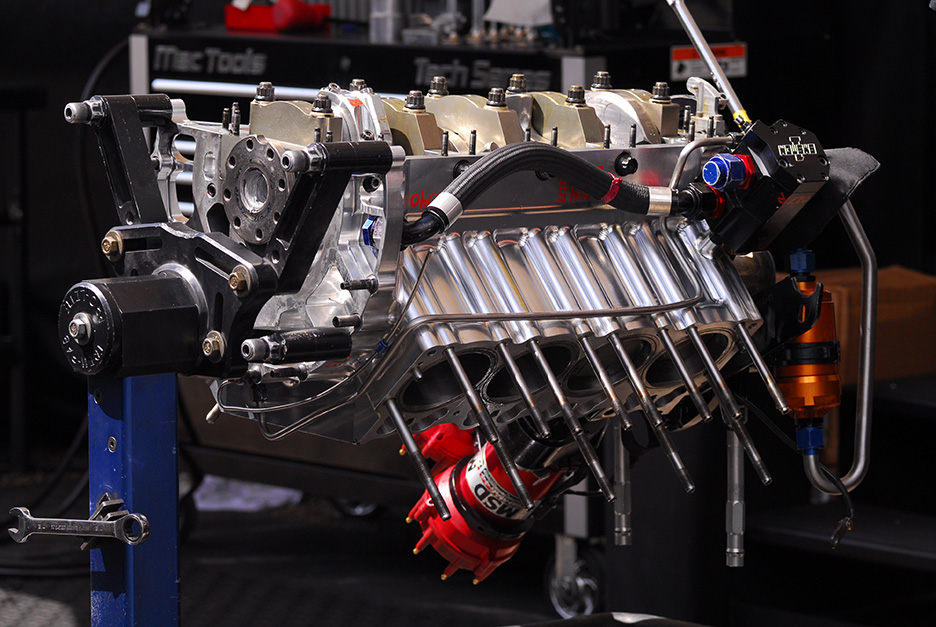
The aluminum hemi block is dimensionally the same as the original Gen II Hemi. Those specs are mandated by NHRA rules.
Some other crew chiefs claim even more power for the modern Mopar Hemi. Perhaps giddy with the chance to be interviewed on TV, a couple of respected wrenches said, in ESPN interviews, that today’s motors might be making 10,000 horsepower.
Coil doesn’t buy that. “Last time I ran numbers I came up with about 8,000, he said, “I see today’s motors making about the same amount of power as those of five years ago with a lot less damage.”
What Makes ‘Em Monsters
How do you make 8,000 horsepower in a motor that was originally rated at 425 ponies? The simple answer is by burning as much nitromethane fuel as possible under as high a cylinder pressure as can be achieved. The nitromethane is key here, because while it’s not as potent as gasoline in its natural state, it will burn with much less oxygen, thus far more of it can be forced into each combustion chamber.
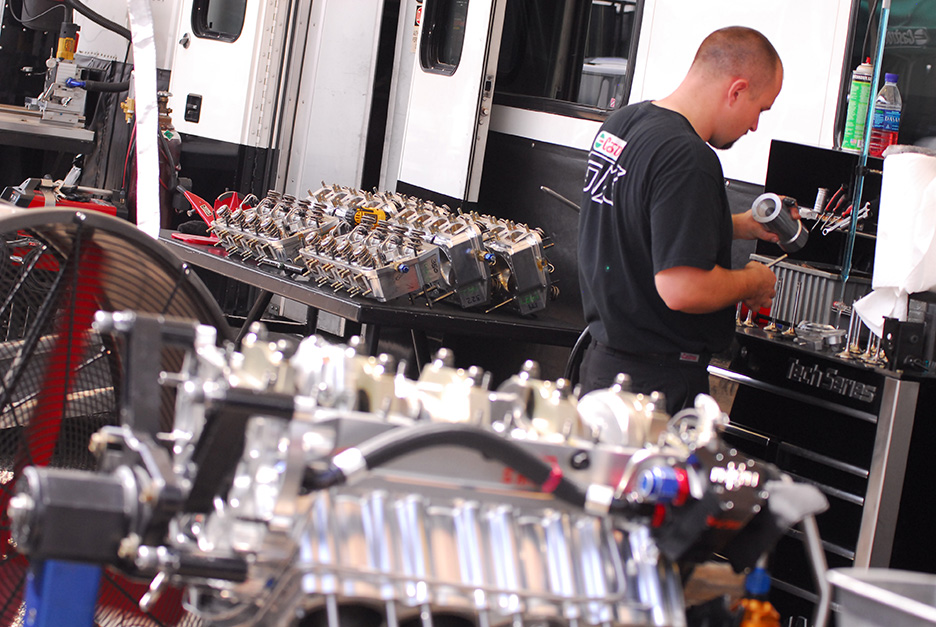
While a short block stands ready in the foreground, a crew member assembles cylinder heads in the background.
Engine displacement is limited to 500 cubic inches. Today’s common configuration is a 4 3/16-inch bore (1/16-inch less than the stock Gen 2 Hemi) and a 4 1/2-inch stroke (3/4 inch more than stock). The solid aluminum cylinder blocks are much tougher than the originals, because they’re constructed without water jackets. The production method used varies by manufacturer but all blocks are either billet or forged 6061 T6 aluminum alloy. Coil said both types are fine, and although that alloy isn’t state-of-the-art material, it’s strong enough. He’s seen engines bust a rod without kicking it out the side of the block. That’s heavy duty.
The fuel pumps that deliver a mix of approximately 90% nitromethane and 10% alcohol are capable of about 95 gallons per minute.
“But we never see that much fuel in the engine,” Coil said, “We might honestly see 86 or 87 gpm going in the motor. The fuel system bleeds off a lot of fuel at the hit of the throttle – about 25 to 30 gpm. As the clutch engages, it pulls the motor down from 8,500 rpm to about 6,800, increasing load, and the fuel system slide valve cuts the return volume to zero. At about the 1/8th mile, the system again starts bleeding off fuel volume to maintain optimum mixture. To burn a large volume of fuel, the engine has to be at a high temperature and under heavy load.”
At least 42 injector nozzles are required to distribute that huge quantity of fuel, while keeping it atomized for ignition. Ten injectors are in the throttle housing atop the supercharger and 32 are in the intake manifold and cylinder heads.
Okay, we have enough fuel; now we need some air. A roots-type supercharger, not unlike the GM blowers that early drag racers used to borrow from the engine compartments of parked buses and trucks, packs in enough air to generate about 60 psi of manifold pressure at the finish line. The supercharger is limited by NHRA rules to 19 inches long by 11 ¼ inches wide, and there are specs that restrict rotor configuration.

Fuel injector nozzles in the intake ports fed by a fuel rail that runs the length of the head.
Back in the early 1960s, on the Southside of Chicago, the Chicago Transit Authority bus yard was known as the blower store, and it was only open after midnight. But I digress.
Piston height and head-gasket thickness combine to provide a compression ratio of anywhere from about 6.5:1 to 6.8:1, depending on conditions. On upstroke, each piston hammers a huge volume of pressurized fuel and air into the combustion chamber, creating extremely high pressure, which, in turn, yields a violent explosion on ignition, generating about 1000 horsepower – or more than double that of the original 8-cylinder engine. From just one cylinder.
If the tires spin, increasing engine rpm and, consequently, fuel volume, the flame can be quenched in one or more cylinders and hydraulic pressure can lead to a blown head gasket or broken connecting rod and the wrong kind of fire.
That’s just one of many bad things that can go seriously wrong when you turn 8,000 horsepower lose. Some are extra ugly, like an overly lean condition or dropped valve that backfires the blower, rips the body apart, and sets the whole mess on fire. Some things, like a tad too much torque at a certain point on the track just lead to a loss, although any system that doesn’t perform as it should will frequently bust things up inside the engine.
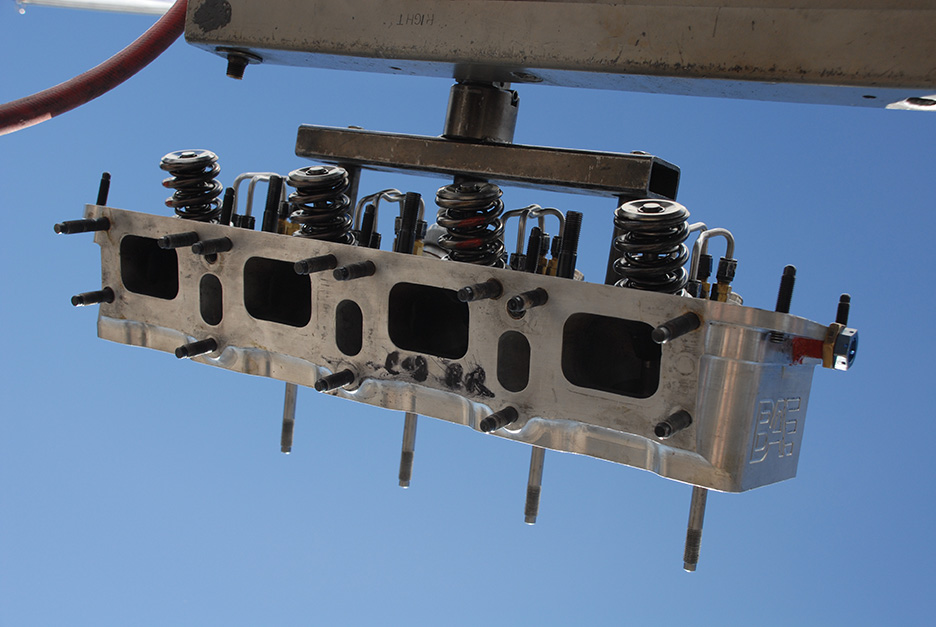
The exhaust ports of this BAE hemi cylinder head are similar to the Mopar originals but larger and more direct.
A supercharged fuel motor is like a testosterone-loaded hothead who will start breaking stuff and putting his fist through walls at the slightest provocation. You don’t want to upset it.
To keep things working the way they should, the crew chief has an abundance of tuning devices he can rely on, including electronic, hydraulic and mechanical systems that enable him to adjust engine parameters for every millisecond of the four seconds it will take to get to the 1000-foot finish line.
The simple way to tune the engine vs. time would be with computers that analyze feedback from sensors and make adjustments accordingly, but NHRA doesn’t allow computer controls that change operating parameters during the run. However, the sanctioning body does allow recording of data, and today’s Racepak Data Systems can read information from 32 channels, measuring temperature at multiple locations, manifold pressure, ignition timing, engine rpm, driveshaft rpm, fuel flow, fuel pressure, clutch-actuation pressure, clutch throw-out bearing position and more – all graphed against time.
The best crew chiefs are able to judge that data in combination with changing ambient conditions and track temperature and determine a battle plan for the next run. That’s a tough assignment even with a previous run to review. Making a precise tuneup call for the first qualifying run of an event is exponentially more difficult, but with accurate record keeping and good number-crunching skills, the best tuners can come darn close.
Coil, the architect of the technology that took Force to fifteen world championships is certainly among the all-time best fuel-motor tuners. Many would say he has no equal. That’s a status he earned over more than 40 years of fighting fuel motors.
“Remember back in the day when we used to think traction would get better as the track warmed up, We had it backwards!” he said with a big belly laugh to punctuate the magnitude of the error. “A few years back, when testing at Vegas, we ran a 4.69 for the full quarter with track temperature at 38°.”
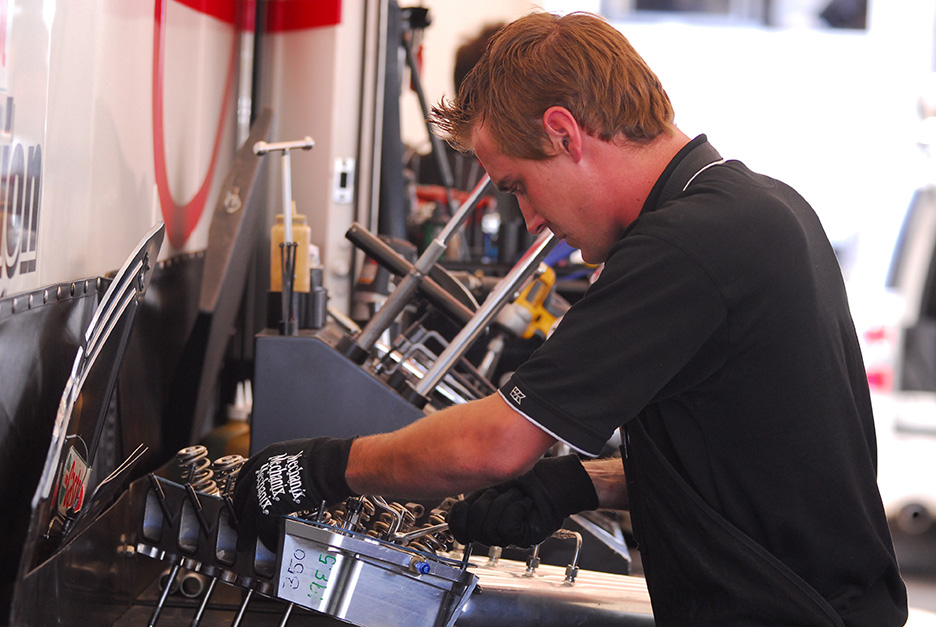
Alex Conway, a Force team member, services a cylinder head.
But I digress. Digressions are part of the fun that is a bench-racing session with Mr. Coil, whose love for the sport looms as large as his talent and knowledge.
The Battle in the Pits
Four seconds of wide-open throttle beat the bejesus out of the engine, so the crew disassembles and rebuilds it between rounds. Each team member has a specific responsibility, and if they can’t get the job done flawlessly ever time, they will be replaced. Meanwhile, the crew chief studies the computer printout of the last run and puts together a plan for the next run.
“The best teams change just about everything, every run,” said Coil. “About 40 minutes before it’s time to pull their mess up to the starting line, they look at the current weather conditions and the satellite forecast, then select their compression ratio and blower overdrive.”
All pistons, rods, rings and bearings are replaced between rounds. The assemblies that were removed will be examined and will go back in the mix if they’re not damaged and have not exceeded their life-cycle limits.
A supply of pistons with compression heights that vary in 0.002-inch increments and head gaskets of varying thickness allow almost infinite adjustment of compression ratio between about 6.5:1 and 6.8:1.
Compression ratio can vary from one cylinder to the next and is determined by analyzing the beating that the pistons and bearings have been taking. If the piston in one cylinder is consistently damaged and the bearing is pounded, the compression of that cylinder can be reduced. Coil says that in a typical setup you might have three cylinders that represent the baseline or zero, along with a couple that have slightly higher compression and a couple with lower compression.
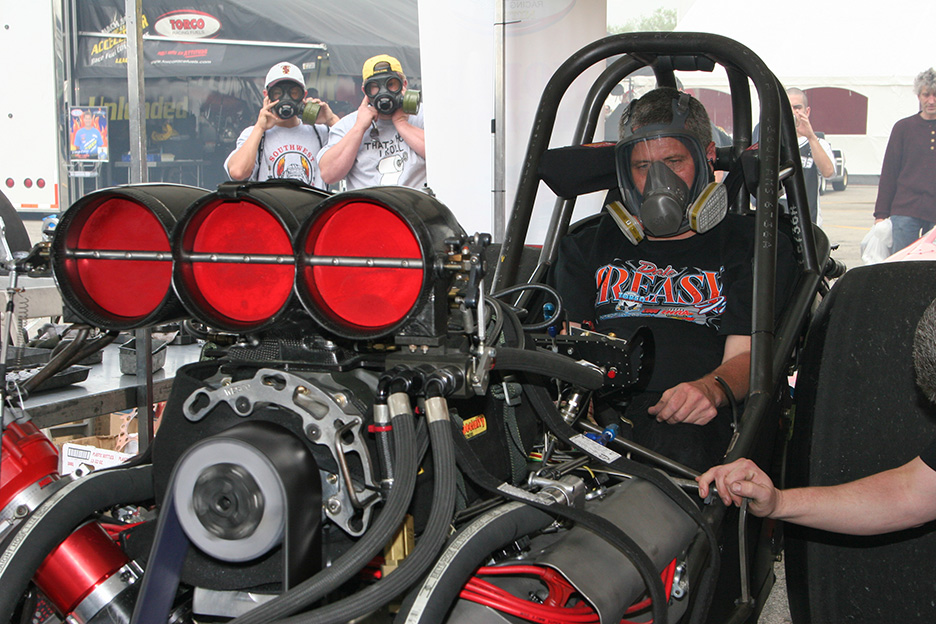
Dale Creasy Jr. warms his car in the pits. The warm-up allows a check of various systems while putting some heat in the motor. His dad, Dale Sr., was a funny car pioneer back in old Chicago town.
While the pistons and rods are being replaced, the cylinder heads will be disassembled and new valves or used valves that have passed inspection will be installed. The old valves will go back in the mix after inspection and cleanup.
The blower will be inspected and some of the plastic strips that help seal the rotors against the case and each other will be replaced.
While the compression ratio has to be chosen when the engine is assembled, other tuning variables including nitromethane percentage, blower overdrive ratio, the amount of fuel bypassed at various speeds, spark-advance mapping, and clutch application will be adjusted as late as possible to allow for changing conditions.
That last factor, clutch application, is a science in itself. The five- or six-disk clutch is applied at a predetermined sequential rate by centrifugal force acting on eighteen levers. How aggressively the clutch applies is determined by the amount of weight attached to each lever. The clearance between the levers and the disk pack varies so throw-out bearing position can dictate when each lever comes into contact with the pack.. An array of timers controls hydraulic devices that determine throw-out bearing position and, consequently, the lever application sequence.
Coil said the first six levers might come on all at one time, then seven through eighteen can be applied one at a time as the timers allow the throw-out bearing to move away from the levers. The goal is to optimize traction at each point on the track.
To make clutch operation predictable, all disks and pressure surfaces have to be replaced for every run with new or newly machined parts. Then the weights and hydraulic actuators are adjusted to reflect what the recorded data says about clutch operation on the last run and what the crew chief believes track conditions will dictate.
No one said it was going to be easy.
With the engine and clutch reassembled, the car is warmed in the pits to put some heat in the heads and make sure nothing is critically amiss. Then, it’s off to the starting line.
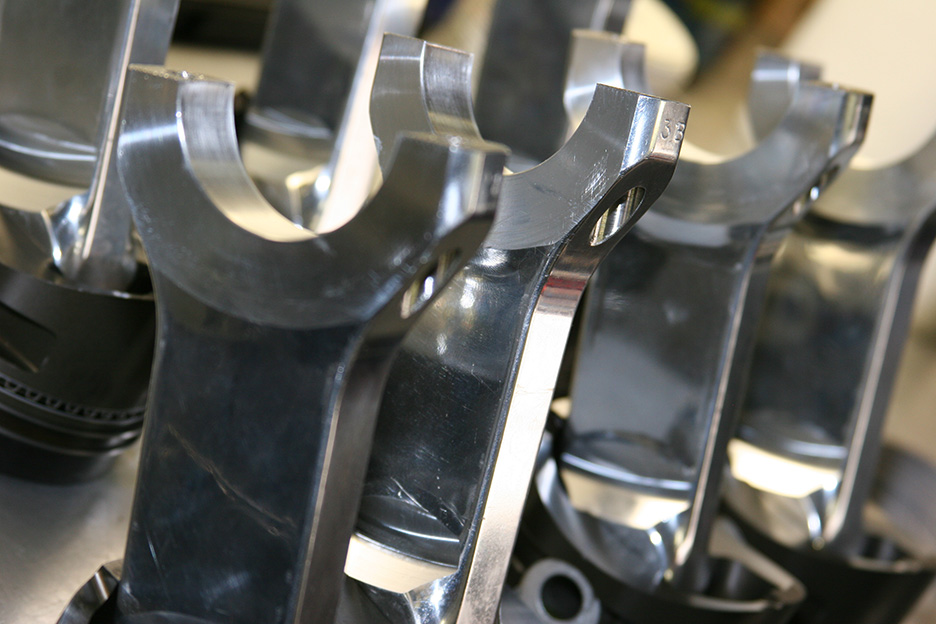
Stout aluminum connecting rods can handle heavy loads without pounding the crankshaft to death.
The Performance
“If the engine tuneup is based on an 89 percent nitromethane fuel mix, the crew might leave the pits with 89 ½ percent in the tank,” said Coil. “If necessary, the mix can later be enriched by adding methanol.”
On their way to the starting line, the crew keeps an eye on the weather via a station in their trailer that broadcasts information. A computer in the tow vehicle running custom software can translate changes in conditions into fuel-mix requirements.
The last parameter, spark-advance mapping, is set only after the crew chief has had a chance to watch a couple of cars run in his lane. Because spark timing has a great impact on torque and, consequently, traction, the spark map can be adjusted to compensate for problem areas on the racetrack. Just before pulling to the line, a revised map will be downloaded to the engine’s spark-control computer. The operation requires about five seconds.
Finally, the monster motor is fired. The driver does his burnout with idle fuel flow set at about 4.2 gpm to allow for clean running, and the idle speed set at a number that makes the reverse trip to the starting line easy. After the burnout, the body is lifted and the crew chief adjusts idle speed to the race setting, using a tachometer on a dashboard connected to the Racepak computer. The dashboard is removed, the body is lowered and the driver pulls up to prestage.
In prestage, a crewman adjusts the wheelie bar, and the crew chief leans over and turns the idle mixture screw to a setting of about 5.4 gpm.
That’s it for the crew chief and his tired team of mechanics.
The driver is now alone at the starting line. When he – or quite often these days, she – sees amber, 8,000 ponies are unleashed, and those close to the action feel the earth move under their feet. Four seconds later, with the engine eating itself, the missile crosses the finish line at more than 300 MPH
If it’s a win, the crew will have about an hour to do it again.

